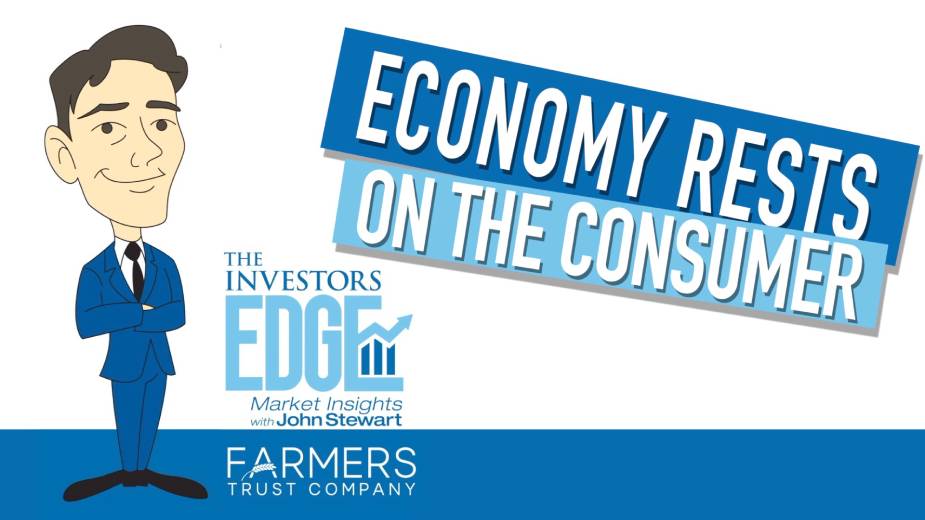Inflation’s Still A Problem | The Investors Edge
By John Stewart, chief investment officer at Farmers Trust Co.
Week in Review: Inflation’s Still a Problem
What a difference a week makes. Investors had begun to breathe a sigh of relief as stocks seemed to be pricing in a continued moderation in the rate of inflation by rising roughly 5% in as many days leading up to Tuesday’s consumer price index inflation report for the month of August.
Then, all of a sudden, BAM! A hotter than expected report on price pressures sent stocks tumbling to their worst day since the pandemic induced volatility of June 2020. The Dow fell by more than 1000 points.
Equities have been on a schizophrenic back and forth for weeks now, bouncing up and down as if on a bungee cord between expectations of a soft landing or the possibility of a more damaging recession.
We’ve been consistent in our message to investors that this type of volatility will likely continue for at least the next couple of quarters as the Fed tries to bring inflation under control. The $31 trillion question remains, just how much pain will accomplishing that goal require?
Our focus is on the path of earnings expectations and revisions to those expectations. For the time being, the trend is NOT your friend.
Featured Insight: Dividends Help Avoid Fire Sales
If there is a cardinal sin when it comes to investing, it is selling your stocks at the worst possible time because you panic after the broader market has taken a turn for the worse.
Investing is a long-term endeavor, and selling low because your emotions get the better of you is a sure-fire way to put the odds of success squarely against you.
One reason investors are forced to sell stocks when the broader market is down is that they need the money for some reason; perhaps you are living off your investments for retirement income.
Generating liquidity has been especially difficult this year as fixed income assets have broadly declined in value alongside equity investments.
One way to help avoid having to fire sell your stocks is to ensure they generate some income through dividend payments. While focusing solely on the dividend, or investing in stocks that pay above-average dividends can be risky, there are plenty of high-quality companies that pay dividends between 3 and 5%. The income those stocks generate can help supplement living expenses so that you aren’t forced to liquidate the shares themselves at the worst possible time.
Looking Ahead: Fed to Hike Again
Yes, another Fed meeting is upon us, and yes they’re going to hike the primary interest rate they control – the Fed Funds rate, which is the rate at which banks lend to one another in the overnight market.
By all accounts, the expectation is for another three-quarter point rate increase, but after the hotter-than-expected inflation report earlier this week, the market was pricing in close to a 1-in-3 chance of a full percentage point hike. Nevertheless, that outcome seems pretty unlikely.
While higher interest rates will continue to tighten financial conditions and put the brakes on an already slowing economy, the Fed is also draining liquidity from the financial system through a reduction in the securities holdings on its balance sheet.
All this adds up to reinforce the point I made earlier – market volatility is upon us, and it is likely going to be with us for longer than people expect. There are still opportunities to make money in this market, but it will require more flexibility than many investors have been accustomed to for a while.
Copyright 2024 The Business Journal, Youngstown, Ohio.


